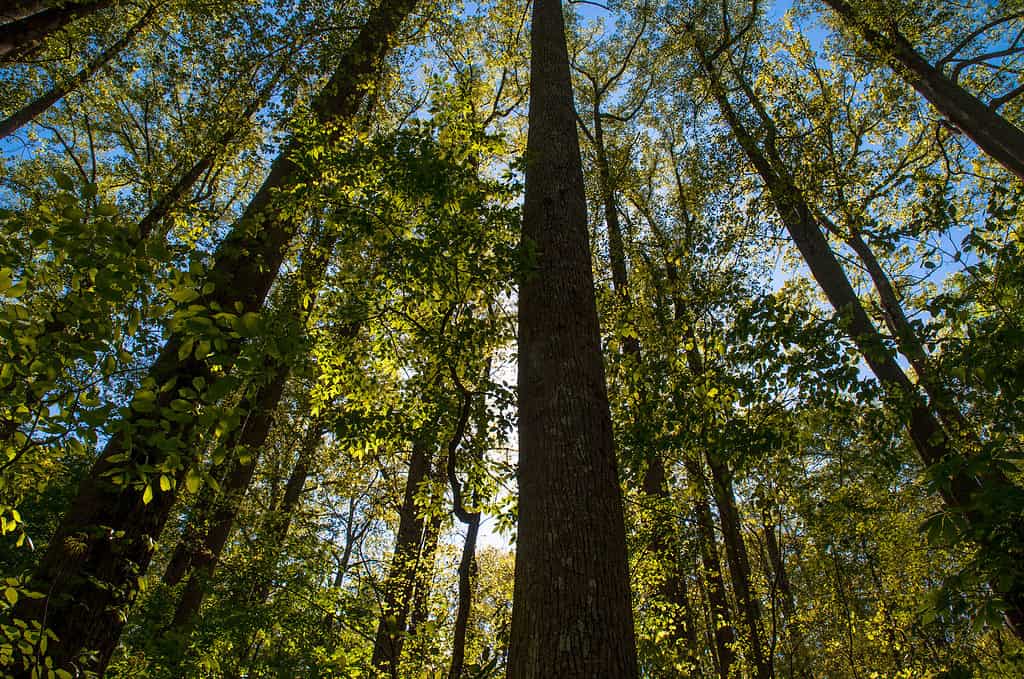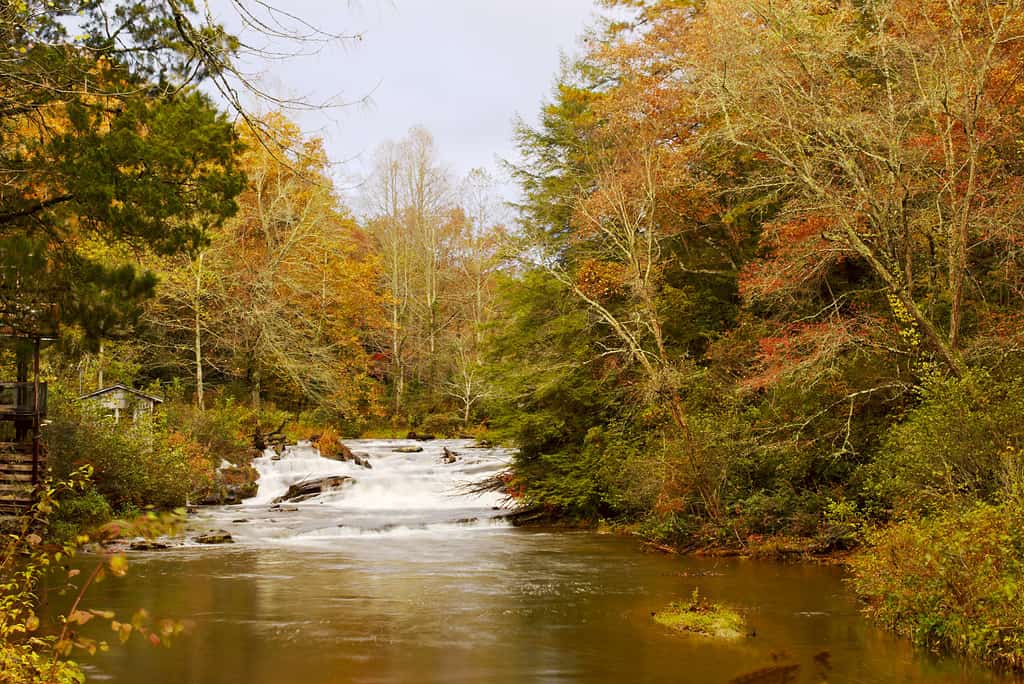Georgia is a beautiful southeastern state with many types of real estate. There are urban parcels that are ideal for business and industry. Additionally, natural resources are distributed throughout the state that governments, nonprofits, individuals, and industries manage. Who is Georgia’s largest landowner?
Weyerhaeuser—Georgia’s Largest Landowner
Up until 2015, the largest landowner in Georgia was Plum Creek Timber. In 2015, however, they were purchased by Weyerhaeuser, another timberland company that owns and manages timberland throughout the United States and Canada. In that merger, the 750,000 acres of Georgia timberland owned by Plum Creek was transferred to Weyerhaeuser. After selling some of their Georgia properties, Weyerhaeuser is Georgia’s largest landowner, with 583,000 acres of timber.

Weyerhaeuser manages timber in Georgia, other U.S. states, and Canada.
©alans1948 / Flickr – License
Land Owned Across the United States
As of Weyerhaeuser’s 2022 annual report, the company owned 9,838,000 acres of U.S. timber. They also manage an additional 727,000 acres—leasing it to entities that pursue some of their goals, such as recreation and conservation, and for commercial purposes.
History
In 1900, Frederick Weyerhaeuser and 15 partners purchased 900,000 acres of timber in the state of Washington, incorporating their business there as the Weyerhaeuser Timber Company. They built their first sawmill in 1902 and rapidly expanded their business and holdings. In 1929, they created what was at that time the world’s largest sawmill at Longview, Washington. They began to harvest with a view to sustainability in 1937, leaving smaller trees to grow. In 1938, Weyerhaeuser began planting trees by hand to replace the harvested trees.
Over the years, Weyerhaeuser continued to expand its operations and pursue methods to control its timber resources sustainably. They faced occasional challenges, such as the eruption of Mount St. Helens, which cost them over 65,000 acres of lumber. In 2010, they elected to become a Real Estate Investment Trust (REIT) to allow the public to invest in the real estate they own and manage.
In 2015, Weyerhaeuser began the process of acquiring Plum Creek Timber. The process was completed in February 2016, making the combined companies the United States’ largest private owner of timberland. By the time the merger was completed, Weyerhaeuser held over 13,000,000 acres of timber.
What They Do
Weyerhaeuser focuses on the growth and harvest of trees and how to get the most value out of their holdings. They also create and sell products that use the wood they harvest.
Grow and Harvest Trees
Their primary resource is their timber. When they harvest trees, they aim to replace them with seedlings suited to the site. They then want to manage these forests and guide them to maturity. As the forests grow, Weyerhaeuser works to minimize risks to their investment, trying to protect the crop as it grows. They harvest the trees at maturity and convert them into lumber, paper, paper pulp, and wood pellets. They also utilize or allow the land to be used for recreational purposes.
Maximize Value of Land Holdings
Weyerhaeuser is also looking at ways to utilize the land by leasing it for renewable energy, such as wind and solar. There are also plans to use the forests for carbon capture and storage. They also plan to gradually sell property for different purposes. Some will be sold for conservation or recreational purposes. There are also some plans to sell land for commercial or residential purposes. A portion of their holdings will be set aside for real estate development.

Weyerhaeuser owns 9,838,000 acres of timber across the U.S.
©Laura Clay-Ballard/iStock via Getty Images
Manufacture and Sell Wood Products
The harvested timber is processed and distributed as construction-grade lumber, sheathing, subflooring, and engineered products, such as plywood, I-Joists, and fiberboard. They can also sell byproducts like woodchips. Some of the products are exported, mainly to Asia.
Controversy
Though Weyerhaeuser states that its goal is sustainable utilization of timber resources, some claim that the company is still cutting old-growth forests and that using forested lands for carbon capture and offsets is environmental sleight of hand. Weyerhaeuser denies these allegations.
The photo featured at the top of this post is © Laura Clay-Ballard/iStock via Getty Images
Thank you for reading! Have some feedback for us? Contact the AZ Animals editorial team.







